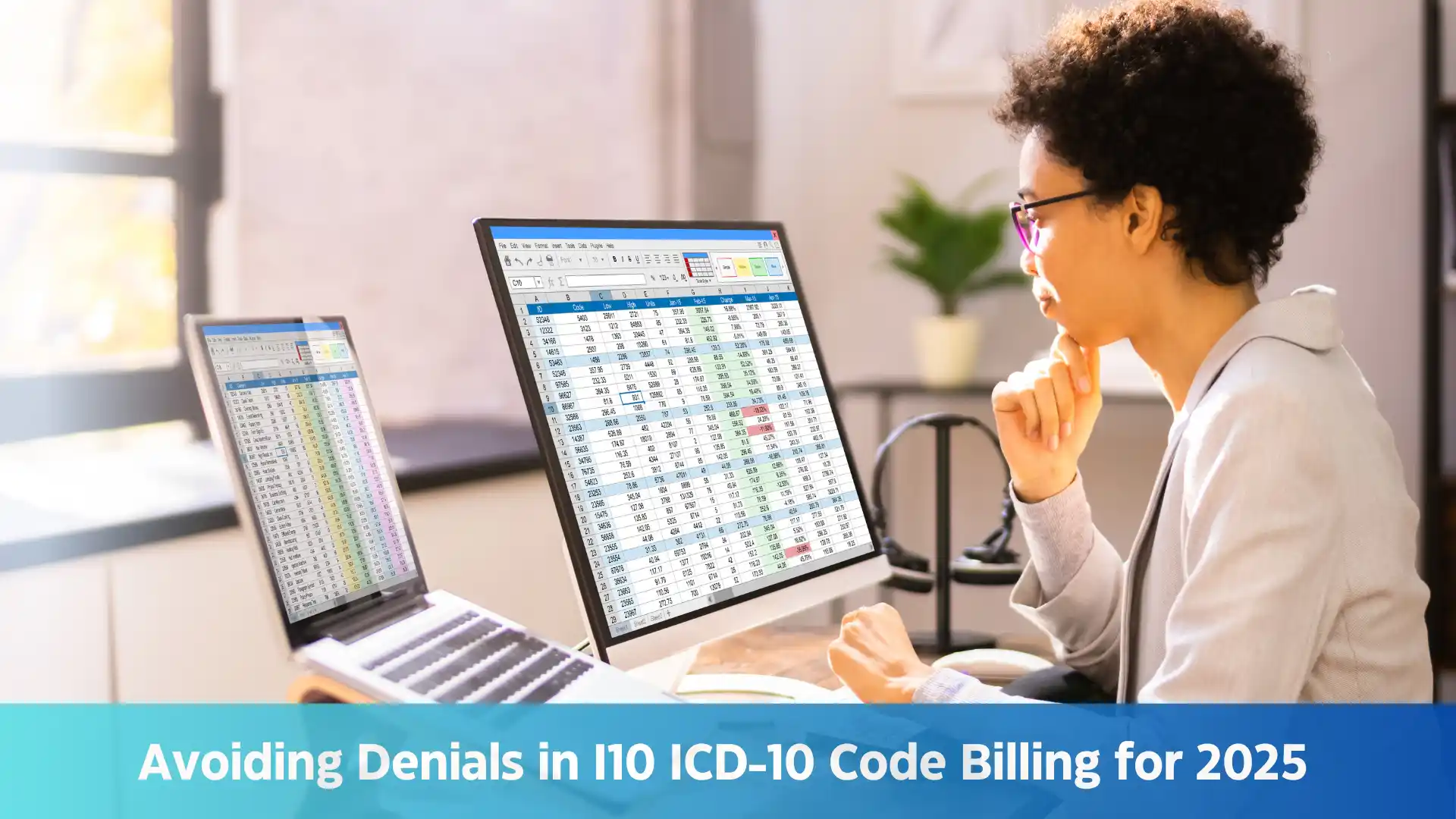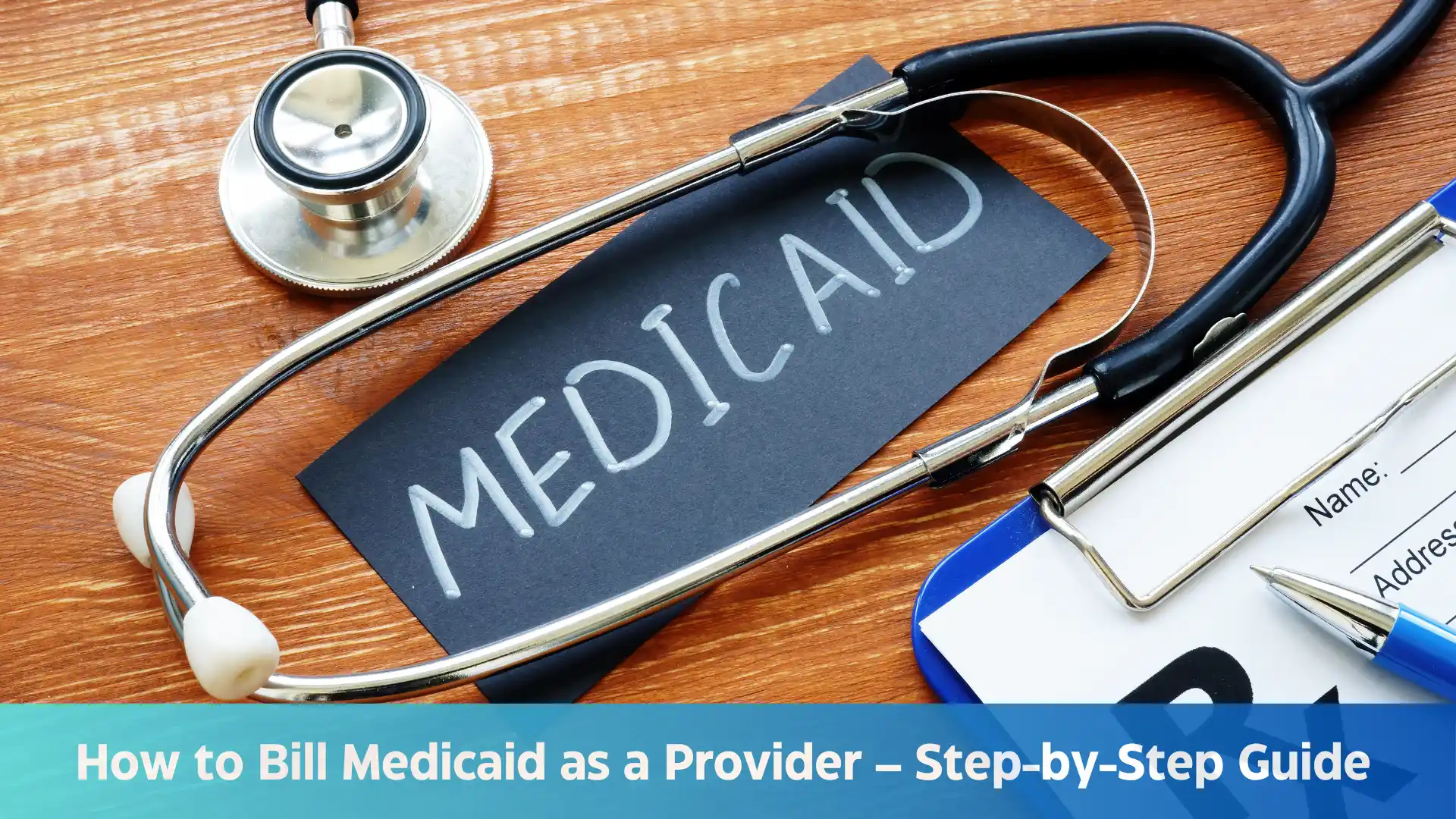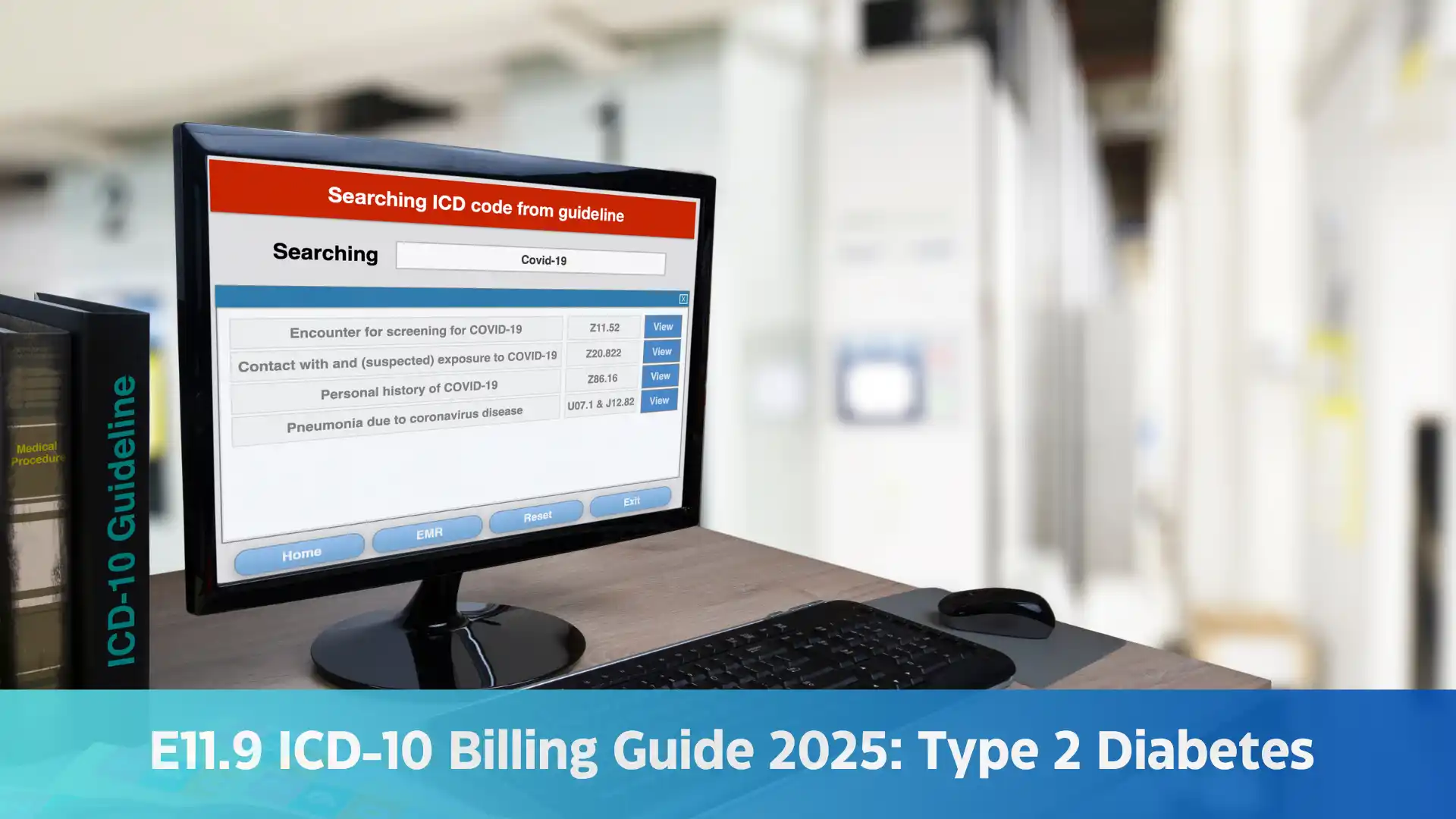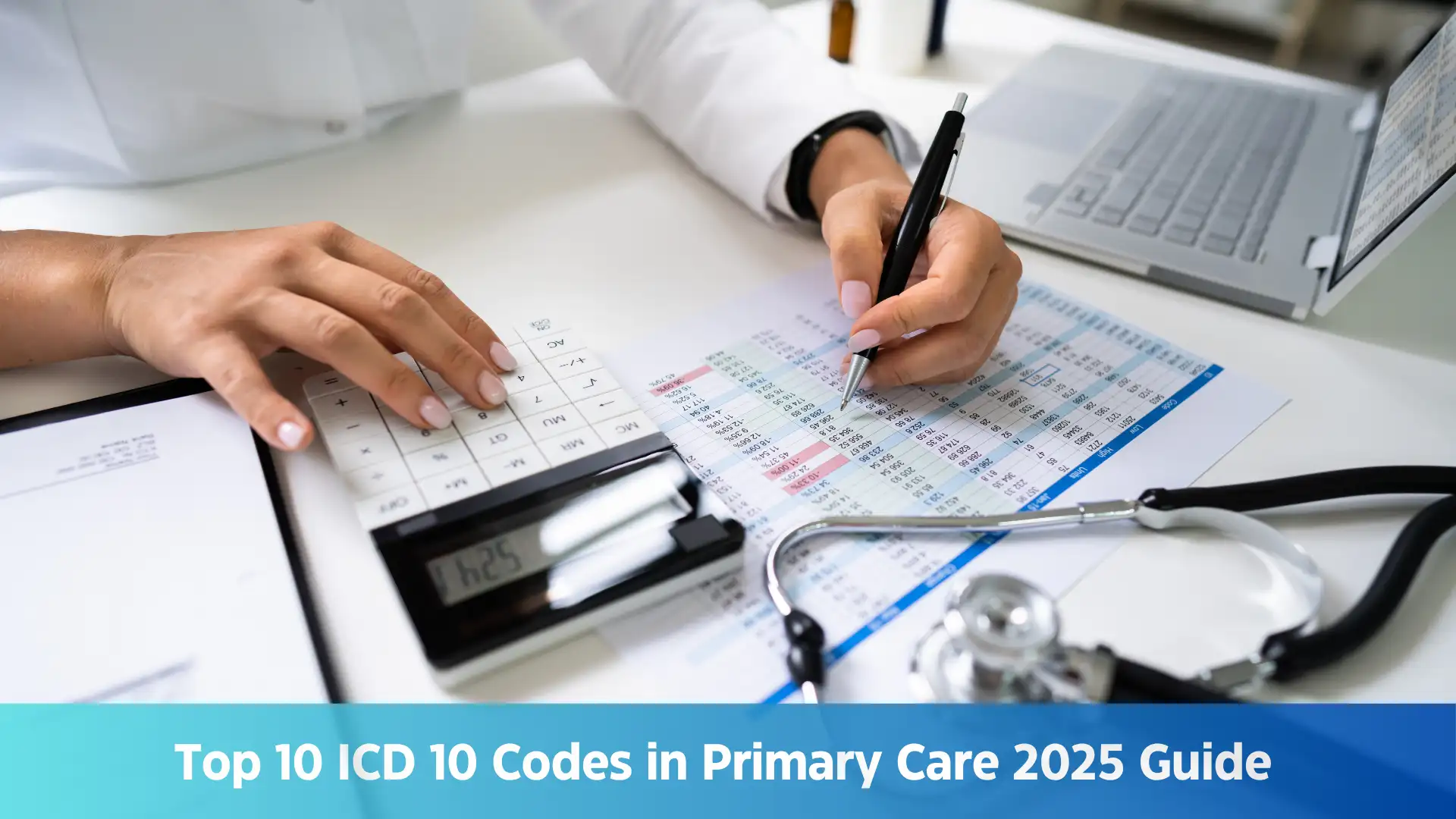Avoiding Denials When Using I10 for Hypertension
Hypertension is one of the most commonly treated chronic conditions in the U.S., and the ICD-10 code 110 is used millions of times each year to document it. But billing it incorrectly can result in denied claims, delayed payments, and frustrating resubmissions.
Whether you're a physician, coder, or billing specialist, understanding how to use I10 accurately is key to reducing denials and improving clean claim rates.
In this blog, you'll learn:
- What I10 represents and when to use it
- Documentation and diagnosis linking best practices
- Common payer denial reasons — with fixes
- How to structure a claim using I10
- Which codes to use when hypertension coexists with CKD, heart failure, or diabetes
What Is the I10 ICD-10 Code
The I10 ICD-10 code refers to essential (primary) hypertension, which is high blood pressure not caused by another disease. It is the standard diagnosis code used in most adult outpatient visits where high blood pressure is being monitored or treated.
Unlike secondary hypertension, which is linked to another underlying condition like kidney disease or hormonal disorders, essential hypertension has no identifiable cause but is still managed with medications, lifestyle changes, or both.
Why I10 Coding Errors Are So Common
Even though the I10 ICD-10 code for essential hypertension is one of the most frequently used diagnosis codes, it is also one of the most commonly misreported. Many claims are denied not because the patient doesn’t have hypertension, but due to errors in how the diagnosis is documented or submitted. These denials often occur when important linked conditions, such as chronic kidney disease (CKD) or heart failure, are omitted from the claim. In other cases, the documentation may fail to support medical necessity, or it may be incomplete, unclear, or inconsistent with the information on the claim form. Additionally, mismatches between the provider’s notes and the codes submitted can raise red flags during payer review. Payers expect a complete clinical picture that justifies treatment. If critical supporting details are missing, the claim can be easily rejected.
Proper Documentation for I10
Linked Diagnosis Codes to Use with I10
I10 and Chronic Kidney Disease (CKD)
If the patient has both hypertension and CKD, don’t use I10 alone. Instead, use the combined code I12.9 (hypertensive CKD, stage 1 through 4) along with a code that reflects the stage of CKD, such as N18.3 for stage 3.
I10 and Heart Failure
I10 and Both CKD and Heart Failure
If both CKD and heart failure are present, use I13.0 (hypertensive heart and CKD with heart failure and stage 1-4 CKD), plus a CKD stage code and a heart failure code.
I10 With Diabetes
Although diabetes is not directly linked to hypertension in the code set, it’s frequently seen together in real cases. In these instances, include both E11.9 (Type 2 diabetes without complications) and I10, if no other complications exist. You can also read the complete guide on E11.9 ICD-10 Billing Guide 2025 for Type 2 Diabetes to dive deeper into accurate coding and documentation.
Using these combined codes paints a fuller picture of the patient’s condition and helps the payer understand the need for treatment.
Proper Claim Setup for I10
| Claim Element | Example Entry |
|---|---|
| Primary Diagnosis | I10 (Essential hypertension) |
| Secondary Diagnosis | Z79.899 (Long-term drug therapy), E11.9, etc. |
| Procedure Code | 99213 (Office visit, established patient) |
| Claim Note | “Patient follow-up for HTN. BP 150/95. Medication adjusted. Advise low-sodium diet.” |
Make sure every CPT service (e.g., blood pressure check, med refill) is clearly linked to the diagnosis.
Example Claim Scenario
}A 65-year-old male comes in for a follow-up of his high blood pressure and is also on medication. His blood pressure is checked, and his meds are adjusted.
Diagnosis Codes
- I10 (Essential hypertension)
- Z79.899 (Long-term drug therapy)
Procedure Codes
- 99213 (Office/outpatient visit, established patient)
Claim Note
“Patient presents for HTN follow-up. BP today is 150/95. Medication adjusted. Continue low-sodium diet.”
This setup clearly links the visit purpose (I10), ongoing therapy (Z79.899), and treatment provided.
How to Prevent I10 Claim Denials
Common I10 Denials and Fixes
| Denial Code | Denial Reason | How to Fix |
|---|---|---|
| CO-50 | Service not medically necessary | Show documented BP reading, diagnosis, treatment plan |
| M76 | Inappropriate code for condition | Use I11/I12/I13 if CKD or heart failure is also present |
| MA13 | Missing documentation | Include labs, BP logs, notes showing medical necessity |
| CO-16 | Missing/incomplete info | Review all claim fields, ICD codes, modifiers, and NPI |
| PR-49 | Provider not enrolled or eligible | Confirm active enrollment in Medicare/Medicaid or applicable payer systems |



